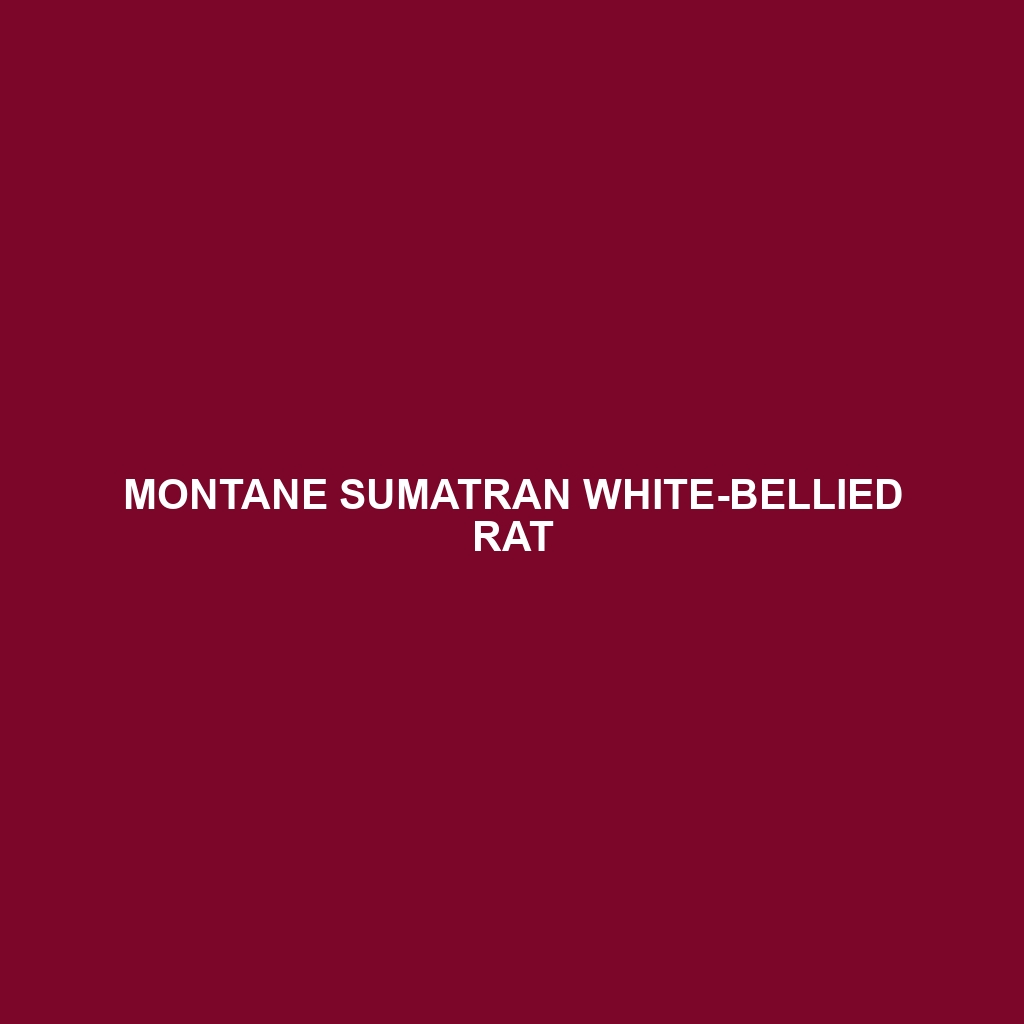Montane Sumatran White-bellied Rat
Common Name: Montane Sumatran White-bellied Rat
Scientific Name:
Habitat
The Montane Sumatran White-bellied Rat is primarily found in the mountainous regions of Sumatra, Indonesia, particularly within the highland forests. This species thrives in areas with dense vegetation, often inhabiting tropical montane forests at elevations ranging from 1,000 to 2,500 meters. Their preferred habitats are characterized by abundant rainfall and cooler temperatures, which provide suitable living conditions.
Physical Characteristics
This medium-sized rodent typically measures between 20 to 25 cm in body length, with a tail that adds an additional 15 to 20 cm. The Montane Sumatran White-bellied Rat features a distinctive coloration, with a dark brown or greyish upper body and a striking white belly. Its fur is soft and dense, adapted to the cooler mountain climate. Other notable features include small round ears and large, expressive eyes that aid in their nocturnal lifestyle.
Behavior
The Montane Sumatran White-bellied Rat exhibits primarily nocturnal behavior, foraging for food under the cover of darkness. They are known for their agile climbing abilities, often seen ascending trees in search of food. These rats are social creatures, often found in small family groups, and communicate through a variety of vocalizations. Their typical behaviors also include nesting in tree hollows or among dense foliage, providing protection from predators.
Diet
As omnivores, Montane Sumatran White-bellied Rats have a diverse diet that primarily consists of fruits, seeds, nuts, and insects. Their foraging habits are adapted to their mountainous habitat, and they play a significant role in seed dispersion and forest regeneration processes. This species has also been observed scavenging on organic matter, showcasing its opportunistic feeding behavior.
Reproduction
The reproductive habits of the Montane Sumatran White-bellied Rat involve a breeding season that peaks during the rainy months, which typically occur from November to March. Females give birth to litters averaging three to six offspring after a gestation period of approximately 25 days. The young are born blind and helpless and begin to venture out of the nest after a few weeks, learning survival skills from their parents.
Conservation Status
The Montane Sumatran White-bellied Rat is currently listed as vulnerable according to the IUCN Red List. Habitat loss due to deforestation and encroachment for agriculture poses significant threats to its population. Conservation efforts are critical to protect their natural habitats and mitigate human impact.
Interesting Facts
– The Montane Sumatran White-bellied Rat has a unique ability to adapt to various montane environments, showcasing its resilience.
– This species is relatively elusive, and its nocturnal nature makes it difficult for researchers to study in the wild.
Role in Ecosystem
The Montane Sumatran White-bellied Rat plays a crucial role in its ecosystem as a seed disperser, contributing to the growth and diversity of forest plants. By feeding on fruits and seeds, they help in maintaining the health of their habitat and serve as a food source for various predators, thereby maintaining a balanced food web.
